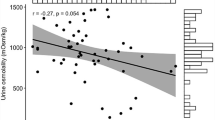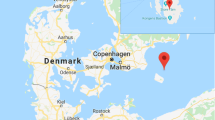Abstract
Osmoregulation in birds is complicated, with different organs acting concurrently to regulate this physiological process. Of particular interest is how the urinary excretions of birds can remove excess nitrogen while minimizing the need for dietary water and balancing the physiological demands of oviparity. It has long been concluded from chemical analyses, and more recently from genetic studies, that uric acid is the principal constituent of urine in Aves. However, research has also demonstrated that waste material may be modified in the ceca immediately prior to it being expelled. Here, we quantify the chemical composition of the urine component of excreta of six avian species using X-ray diffraction techniques to test the hypothesis that it is principally composed of uric acid, as commonly reported. None of the analyzed samples were found to contain uric acid. Instead, a variety of compounds including ammonium urate, struvite (magnesium ammonium phosphate), and two unknown compounds, were found. Our results show that the uric acid pathway is indeed the system by which nitrogen is removed in these birds, but that additional modification occurs in the urine prior to excretion. These results raise questions for future research on the urinary excretions of birds, including identification of the unknown compounds found in the present study.
Zusammenfassung
Eine Neubewertung der chemischen Zusammensetzung des Urins bei Vögeln
Osmoregulation bei Vögeln ist ein komplizierter Prozess, bei dem verschiedene Organe gleichzeitig zur Regulierung ihrer Physiologie aktiv sind. Von besonderem Interesse ist dabei, wie bei Vögeln mit dem Urin überschüssiger Stickstoff ausgeschieden und gleichzeitig der Bedarf an Flüssigkeit aus der Nahrung minimiert sowie die physiologischen Anforderungen der Oviparie ausgeglichen werden können. Chemische Analysen in Kombination mit neuesten genetischen Studien haben schon länger dargelegt, dass Harnsäure den Hauptbestandteil des Urins bei Vögeln bildet. Jedoch haben zusätzliche Untersuchungen ergeben, dass Abfallstoffe in den Blinddärmen unmittelbar vor der Ausscheidung umgewandelt werden. In dieser Studie quantifizieren wir die chemische Zusammensetzung der Urin-Bestandteile der Vogelexkremente von sechs Arten mittels Röntgenstrukturanalysen, um die Hypothese zu testen, dass dieser hauptsächlich aus Harnsäure besteht, wie stets berichtet wird. In unseren Ergebnissen konnte kein Beleg für Harnsäure in den analysierten Proben gefunden werden. Stattdessen konnten wir eine Vielzahl an verschiedenen Bestandteilen identifizieren, unter anderem Ammoniumurat, Struvit (Magnesium-Ammonium-Phosphat) und zwei unbekannte Verbindungen. Obwohl der Abbau zu Harnsäure weiterhin den Stoffwechselweg darstellt, über den Stickstoff ausgeschieden wird, zeigen unsere Ergebnisse, dass zusätzliche Umwandlungen vor der Ausscheidung stattfinden. Diese Ergebnisse werfen Fragen für zukünftige Untersuchungen auf, einschließlich der genaueren Bestimmung der hier entdeckten unbekannten Verbindungen.



Similar content being viewed by others
References
Anderson GL, Braun EJ (1985) Postrenal modification of urine in birds. Am J Physiol 248:R93–R98
Blaine J, Chonchol M, Levi M (2015) Renal control of calcium, phosphate, and magnesium homeostasis. Clin J Am Soc Nephrol 10:1257–1272
Bojakowska I (2016) Phosphorus in lake sediments of Poland–results of monitoring research. Limnol Rev 16:15–25
Braun EJ (1999) Integration of organ systems in avian osmoregulation. J Exp Zool 283:702–707
Braun EJ, Campbell CE (1989) Uric acid decomposition in the lower gastrointestinal tract. J Exp Zool Suppl 3:70–74
Braun EJ, Pacelli MM (1991) The packaging of uric acid in avian urine. FASEB J 5:A1408
Campbell JW (1995) Excretory nitrogen metabolism in reptiles and birds. In: Walsh PJ, Wright P (eds) Nitrogen metabolism and excretion. CRC, Boca Raton, pp 147–179
Casotti G, Braun EJ (1997) Ionic composition of urate-containing spheres in the urine of domestic fowl. Comp Biochem Physiol 118A:585–588
Casotti G, Braun EJ (2004) Protein location and elemental composition of urine spheres in different avian species. J Exp Zool 301A:579–587
Chaplin SB (1989) Effect of cecectomy on water and nutrient absorption of birds. J Exp Zool 3:81–86
Chong DP (2014) Theoretical study of uric acid and its ions in aqueous solution. J Theor Comput Sci 1:2. https://doi.org/10.4172/2376-130X.1000104
Chruszcz M, Borek D, Domagalski M, Otwinowski Z, Minor W (2009) X-ray diffraction experiment: the last experiment in the structure elucidation process. Adv Prot Chem Str 77:23–40
Clark NB, Wideman RF (1977) Renal excretion of phosphate and calcium in parathyroidectomized starlings. Am J Physiol 233:F138–F144
Clench MH, Mathias JR (1995) The avian cecum: a review. Wilson Bull 107:93–121
Cullen DJ (1988) Mineralogy of nitrogenous guano on the Bounty Islands, SW Pacific Ocean. Sedimentology 93:421–428
Curtman LJ, Hart D (1921) The preparation and properties of some salts of uric acid. J Biol Chem 49:599–613
Danztler WH, Roberts JT (1989) Glomerular filtration rate in conscious and unrestrained starlings under dehydration. Am J Physiol 256:R836–R839
Dauter Z (2017) Collection of X-ray diffraction data from macromolecular crystals. Methods Mol Biol 1607:165–184
Davis WA, Sadtler SS (1913) Allen’s commerical organic analysis, vol 7. Blakiston’s, Philadelphia
del Hoyo J, Elliott A, Sargatal J, Christie DA, Kirwan G (eds) (2018) Handbook of the birds of the world. Lynx, Barcelona
Donovan JJ, Grim EC (2007) Episodic struvite deposits in a northern Great Plains flyway lake: indicators of mid-Holocene drought? Holocene 17:1155–1169
Echols MS (2005) Evaluating and treating the kidneys. In: Harrison G, Lightfoot T (eds) Clinical avian medicine, vol Chap 16. Spix, Palm Beach
Elliott K, FitzSimons DW (2009) Purine and pyrimidine metabolism. Wiley, New York
Engelking L (2002) Review of veterinary physiology. Teton New Media, Jackson
Fisher JR, Eakin RE (1957) Nitrogen excretion in developing chick embryos. J Embryol Exp Morph 5:215–224
Folk RL (1969) Spherical urine in birds: petrography. Science 166:1516–1518
Friedrich W, Knipping P, Laue M (1913) Interferenzerscheinungen bei Röntgenstrahlen. Ann Phys 346:971–988
Gill FB (2007) Ornithology, 3rd edn. Freeman, New York
Griminger P (1976) Protein metabolism. In: Sturkie PD (ed) Avian physiology, chap 13. Springer, New York, pp 233–252
Herd RM, Dawson TJ (1984) Fiber digestion in the Emu, Dromaius novaehollandiae, a large bird with a simple gut and high rates of passage. Physiol Zool 57:70–84
Huether SE, McCance KL (2013) Understanding pathophysiology. Elsevier, London
Hunger S, Sims JT, Sparks DL (2008) Evidence for struvite in poultry litter: effect of storage and drying. J Environ Qual 37:1617–1625
Jahnen-Dechent W, Ketteler M (2012) Magnesium basics. Clin Kidney J 5:i3–i14
Karasawa Y (1989) Ammonia production from uric acid, urea, and amino acids and its absorption from the ceca of the cockerel. J Exp Zool Suppl 3:75–80
Karasawa SJH, Nahm KH (2000) Effect of caecectomy on growth, moisture in excreta, gastrointestinal passage time and uric acid excretion in growing chicks. Br Poult Sci 41:72–74
Keebaugh AC, Thomas JW (2010) The evolutionary fate of the genes encoding the purine catabolic enzymes in hominoids, birds, and reptiles. Mol Biol Evol 27:1359–1369
Laue M (1913) Eine quantitative Prüfung der Theorie für die Interferenzerscheinungen bei Röntgenstrahlen. Ann Phys 346:989–1002
Laverty G, Skadhauge E (2008) Adaptive strategies for post-renal handling of urine in birds. Comp Biochem Phys A 149:246–254
Lee IR, Yang L, Sebetso G et al (2013) Characterization of the complete uric acid degradation pathway in the fungal pathogen Cryptococcus neoformans. PLOS ONE 8:1–13
Lonsdale K, Sutor DJ (1971) Uric acid dihydrate in bird urine. Science 172:958–959
Lumeij JT, Remple JD (1991) Plasma urea, creatinine and uric acid concentrations in relation to feeding in Peregrine Falcons (Falco peregrinus). Avian Pathol 20:79–83
Maiuolo J, Oppedisano F, Gratteri S, Muscoli C, Mollace V (2016) Regulation of uric acid metabolism and excretion. Int J Cardiol 213:8–14
McNabb RA, McNabb A (1975) Urate excretion by the avian kidney. Comp Biochem Phys A 51:253–258
Milroy TH (1903) The formation of uric acid in birds. J Physiol 30:47–60
Minkowski O (1886) Ueber den Einfluss der Leberexstirpation auf den Stoffwechsel. Arch Exp Pathol Pharmakol 21:41–87
Mobley HLT, Hausinger RP (1989) Microbial ureases: significance, regulation, and molecular characterization. Microbiol Rev 53:85–108
Monk RD, Bushinsky DA (2010) Nephrolithiasis and nephrocalcinosis. In: Floege J, Johnson RJ, Freehally J (eds) Comprehensive clinical nephrology. Elsevier Saunders, St Louis, pp 687–701
Nahm KH (2003) Evaluation of the nitrogen content in poultry manure. World Poult Sci J 59:77–88
Parmar MS (2004) Kidney stones. BMJ 328:1420–1424
Reyes L, Braun EJ (2005) The functional morphology of the English Sparrow cecum. Comp Biochem Phys A 141:292–297
Robinson MR, Norris RD, Sur RL, Preminger GM (2008) Urolithiasis: not just a 2-legged animal disease. J Urol 179:46–52
Romer AS (1957) Origin of the amniote egg. Sci Mon 85:57–63
Schmidt-Nielsen K (1997) Animal physiology: adaptation and environment. Cambridge University Press, London
Sherwood L, Klandorf H, Yancey P (2012) Animal physiology: from genes to organisms. Cengage Learning, Thomson/Brooks/Cole
Skadhauge E (1968) The cloacal storage of urine in the rooster. Comp Biochem Physiol 24:7–18
Skadhauge E (2012) Osmoregulation in birds. Springer, Berlin
Sommerfeld A (1912) Über die Beugung der Röntgenstrahlen. Ann Phys 343:473–506
Stanley D, Geier MS, Chen H, Hughes RJ, Moore RJ (2015) Comparison of fecal and cecal microbiotas reveals qualitative similarities but quantitative differences. BMC Microbiol 15:51
Steel T (1922) Chemical notes–general. In: The Proceedings of the Linnean Society of New South Wales vol. 47. Sydney and Melbourne Publishing, pp 441–446
Stenkat J, Krautwald-Junghanns ME, Schmitz Ornés A, Eilers A, Schmidt V (2014) Aerobic cloacal and pharyngeal bacterial flora in six species of free-living birds. J Appl Microbiol 117:1564–1571
Suryanarayana C, Grant Norton M (1998) X-ray diffraction: a practical approach. Springer, USA
Tatur A (1989) Ornithogenic soils of the maritime Antarctic. Pol Polar Res 10:481–532
van der Hoeven-Hangoor E, van de Linde IB, Paton ND, Verstegen MW, Hendriks WH (2013) Effect of different magnesium sources on digesta and excreta moisture content and production performance in broiler Chickens. Poult Sci 92:382–391
Wagner CA, Mohebbi N (2010) Urinary pH and stone formation. J Neophrol 23:S165–S169
Waite DW, Taylor MW (2015) Exploring the avian gut microbiota: current trends and future directions. Front Microbiol 6:1–12
Wang Z, Königsberger L, Königsberger E (2017) Solubility equilibria in the uric acid-ammonium urate-water system. Monatsch Chem. https://doi.org/10.1007/s00706-017-2107-5
Wilcox WR, Khalaf A, Weinberger A, Kippen I, Klinenberg JR (1972) Solubility of uric acid and monosodium urate. Med Biol Eng 10:522–531
Wollaston WH (1810) On cycstic oxide: a new species of urinary calculus. Philos Trans R Soc Lond 100:223–230
Wu G (2013) Amino acids: biochemistry and nutrition. CRC, Boca Raton
Acknowledgments
We wish to honor the late Dr. Robert (Bob) Folk for discussion that inspired this work; his kindness, creativity and broad interests will be remembered. John, Marcy and the staff at Austin Zoo provided the urine samples. Chris Torres provided helpful discussion and comments on the manuscript.
Funding
This work received no project-specific funding.
Author information
Authors and Affiliations
Corresponding author
Ethics declarations
Conflict of interest
The authors declare no conflict of interest.
Archiving of data
All raw data files will be deposited in Dryad upon acceptance of this manuscript.
Additional information
Communicated by L. Fusani.
Publisher's Note
Springer Nature remains neutral with regard to jurisdictional claims in published maps and institutional affiliations.
Electronic supplementary material
Below is the link to the electronic supplementary material.
Rights and permissions
About this article
Cite this article
Crouch, N.M.A., Lynch, V.M. & Clarke, J.A. A re-evaluation of the chemical composition of avian urinary excreta. J Ornithol 161, 17–24 (2020). https://doi.org/10.1007/s10336-019-01692-5
Received:
Revised:
Accepted:
Published:
Issue Date:
DOI: https://doi.org/10.1007/s10336-019-01692-5




